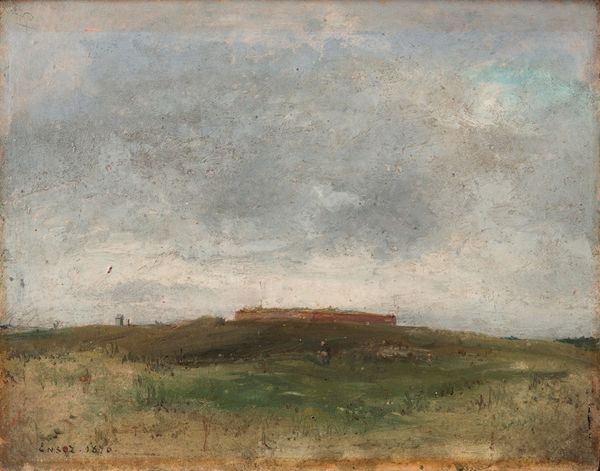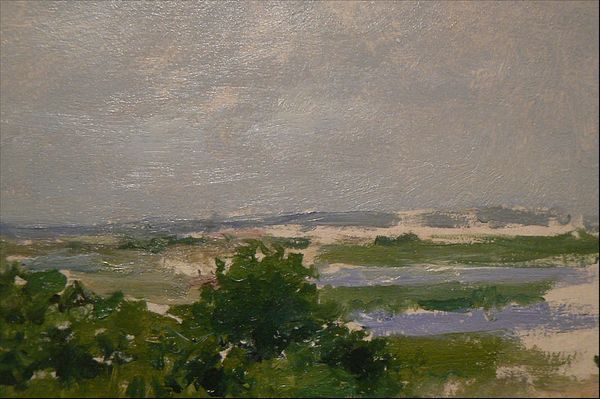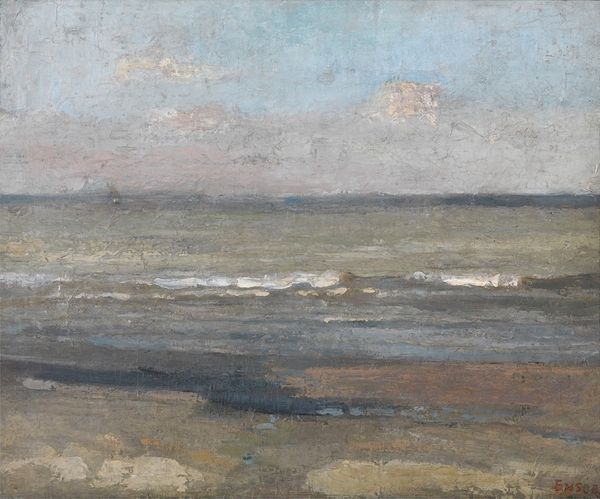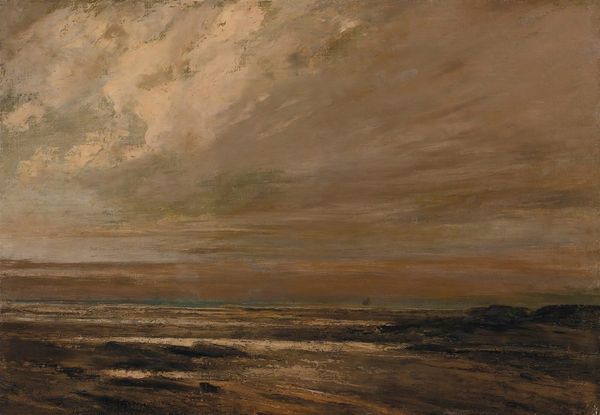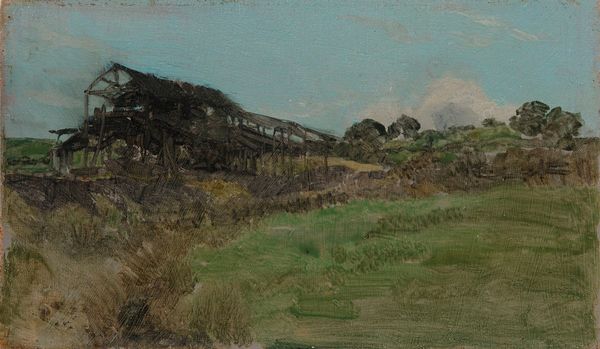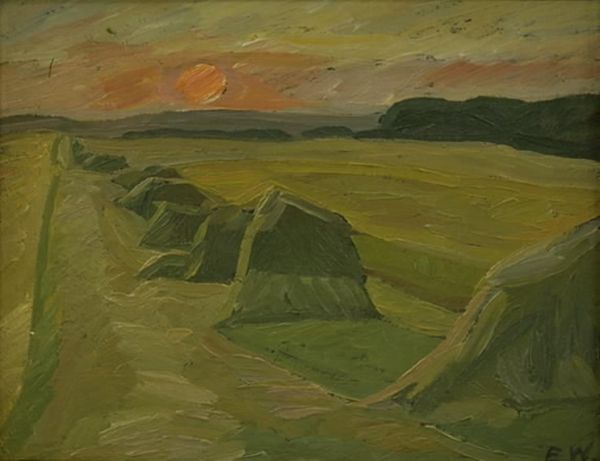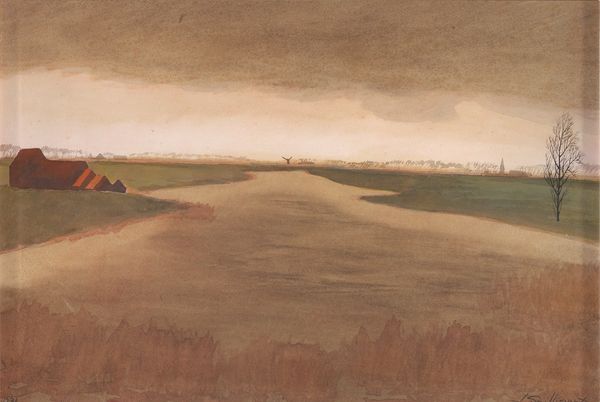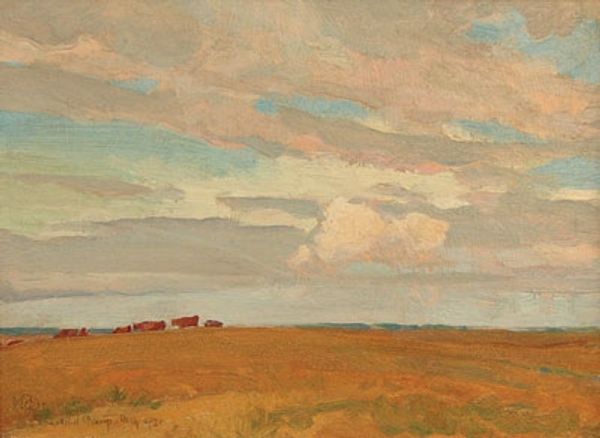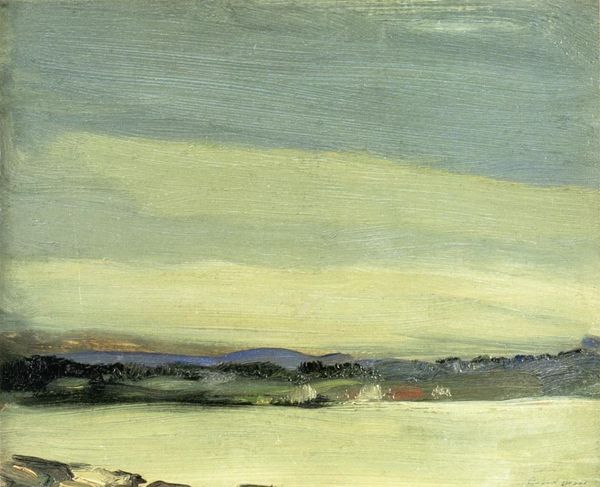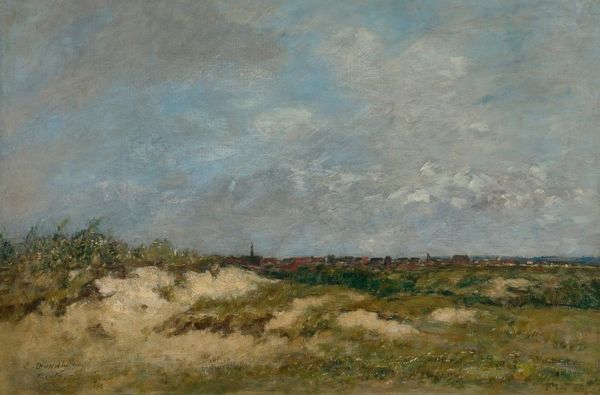
canvas
#
ink painting
#
charcoal drawing
#
impressionist landscape
#
possibly oil pastel
#
canvas
#
underpainting
#
painting painterly
#
watercolour bleed
#
watercolour illustration
#
watercolor
#
shadow overcast
Dimensions: 19.5 cm (height) x 43.5 cm (width) (Netto)
Editor: This is Albert Gottschalk's "Vestjysk landskab. Holmsland" from 1886, held at the SMK. It looks like it's done in oil on canvas. I’m struck by the stillness; the overcast sky gives it this muted, almost melancholic mood. What do you see in this piece, considering the period it was created in? Curator: It's interesting that you picked up on the stillness. I see this painting as a commentary on land and labor. Gottschalk painted this during a time of significant social upheaval in Denmark, with increasing urbanization. His choice to focus on the landscape, and specifically this kind of rural setting, reads to me as a deliberate engagement with questions of national identity and the changing relationship between people and the land. Who is allowed to live and work here, and at what price? The subtle brushstrokes create a somber mood that suggests that perhaps progress has come at a significant loss for some. Does the horizon line emphasize one element over another for you? Editor: I notice how low the horizon line is; it feels like the land dominates the painting, not the sky. Does that point to the importance of agriculture during that time? Curator: Precisely! It emphasizes the weight and presence of the land, perhaps alluding to the labor it demands. It's essential to consider the historical context and how that shapes our interpretation. Were agricultural workers given adequate rights in Denmark at this time? Whose labor does the artwork subtly erase? Are their social systems at play that create certain material realities for its inhabitants? Editor: That gives me a new appreciation for what the artist might be trying to communicate beyond just a landscape. It’s about the relationship between the people and their environment during the era. Curator: Exactly. By engaging with the sociopolitical backdrop, we start unveiling richer interpretations of even the seemingly simple artworks. Editor: I hadn't thought about it that way. Thanks, that was really insightful! Curator: My pleasure!
Comments
No comments
Be the first to comment and join the conversation on the ultimate creative platform.

